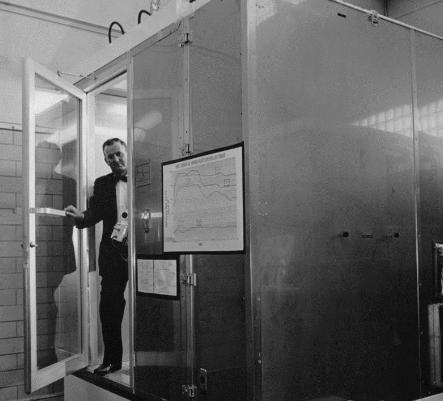The clean room industry is evolving rapidly, with modular and prefabricated clean room systems emerging as a game-changer for manufacturers in 2025 and beyond. As industries like gene therapy, nanotechnology, pharmaceuticals, and semiconductor manufacturing demand faster, more adaptable, and cost-effective solutions, traditional stick-built clean rooms are being replaced by advanced modular designs.
These pre-engineered, factory-built systems offer faster deployment, reduced on-site labor, and significant cost savings—all while maintaining the stringent environmental controls required for contamination-sensitive processes. In this blog, we’ll explore why modular clean rooms are becoming the gold standard, how they benefit cutting-edge industries, and what makes them superior to conventional construction methods.
Why Modular and Prefabricated Clean Rooms Are Gaining Popularity
1. Faster Deployment & Reduced Downtime
Traditional clean room construction can take months or even years, disrupting production schedules and delaying critical projects. In contrast, modular clean rooms are manufactured off-site in controlled factory settings, allowing for quick assembly and installation—often in weeks rather than months.
This accelerated timeline is especially crucial for:
Biotech & gene therapy companies racing to bring new treatments to market.
Semiconductor manufacturers needing rapid facility expansions to meet chip demand.
Pharmaceutical producers requiring scalable clean room solutions for GMP compliance.
2. Lower Costs & Improved Budget Control
Conventional clean room construction is plagued by unpredictable costs—delays, material shortages, and labor overruns can inflate budgets unexpectedly. Modular clean rooms, however, are prefabricated with precision, minimizing waste and reducing labor expenses.
Key cost-saving benefits include:
Reduced on-site construction time (lower labor costs).
Minimal material waste due to factory-controlled fabrication.
Easier scalability, allowing companies to expand without full rebuilds.
3. Enhanced Quality Control & Consistency
Since modular clean rooms are built in controlled factory environments, manufacturers can ensure:
Tighter tolerances for wall panels, HVAC systems, and filtration.
Strict compliance with ISO classifications (ISO 5, ISO 7, ISO 8, etc.).
Fewer defects compared to on-site construction, where environmental factors can compromise quality.
This level of precision is critical for industries where even minor contamination can ruin entire batches of sensitive products.
Industries Leading the Modular Clean Room Revolution
1. Gene Therapy & Cell & Gene Manufacturing
The cell and gene therapy (CGT) market is projected to grow at a CAGR of over 25% through 2030. These therapies require ultra-clean environments (ISO 5 or better) to prevent contamination during production.
Modular clean rooms provide:
Flexible, scalable clean spaces for autologous and allogeneic therapies.
Rapid deployment to meet tight regulatory deadlines.
Future-proof designs that allow for easy upgrades as processes evolve.
2. Semiconductor & Electronics Manufacturing
With the global chip shortage driving demand for faster production, semiconductor fabs need clean rooms that can be built and modified quickly.
Modular solutions offer:
Vibration-resistant and ESD-safe environments.
Seamless integration with existing fab layouts.
Quick reconfiguration for next-gen chip production.
3. Pharmaceutical & Biopharmaceutical Production
Pharma companies face strict FDA and EMA regulations, requiring clean rooms that can be validated quickly and adapted for new drug formulations.
Prefabricated clean rooms help by:
Ensuring compliance with cGMP and USP 800 standards.
Reducing validation time with pre-certified components.
Supporting single-use technology (SUT) integration for flexible manufacturing.
4. Nanotechnology & Advanced Materials
Nanoparticle research and production demand extremely low particulate environments. Modular clean rooms provide:
Ultra-low particulate air (ULPA) filtration.
Customizable layouts for specialized equipment.
Energy-efficient designs to reduce operational costs.
Key Features of Modern Modular Clean Rooms
Today’s modular clean rooms go beyond basic panels and filters—they incorporate smart technology and sustainable design:
1. Plug-and-Play HVAC & Filtration Systems
Pre-installed HEPA/ULPA filters for immediate operation.
Energy recovery ventilators (ERVs) to cut energy costs.
IoT-enabled monitoring for real-time air quality tracking.
2. Flexible & Reconfigurable Designs
Movable wall panels for easy expansion.
Interchangeable clean room classes (e.g., converting ISO 8 to ISO 7).
Softwall and hardwall options depending on application needs.
3. Sustainable & Energy-Efficient Construction
Low-VOC materials for better indoor air quality.
LED lighting with motion sensors to reduce power usage.
Modular components that can be reused or recycled.
The Future of Clean Rooms: Smart, Scalable, and Sustainable
As manufacturing becomes more dynamic, the demand for agile, high-performance clean rooms will only grow. Modular and prefabricated systems are poised to dominate the market because they:
✔ Cut construction time by 50% or more.
✔ Reduce costs while improving quality control.
✔ Enable rapid scaling for fast-growing industries.
For companies in biotech, pharma, semiconductors, and nanotechnology, investing in modular clean rooms isn’t just a trend—it’s a strategic advantage that ensures compliance, efficiency, and future-ready operations.


